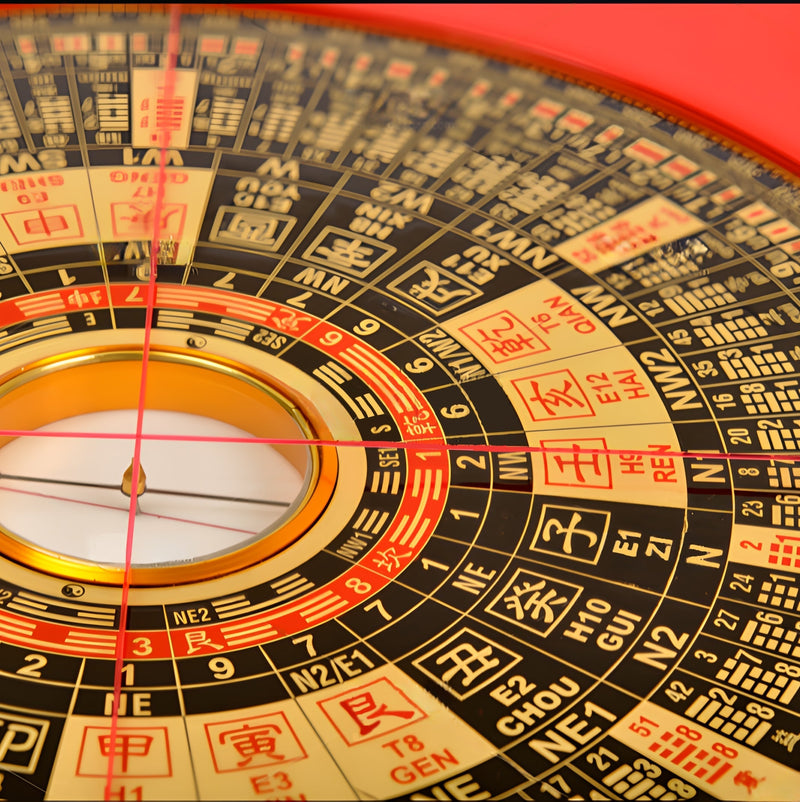
Within the rich tapestry of Chinese culture, Bazi (also known as the Four Pillars of Destiny) serves as a window into life’s mysteries. By arranging the four pillars—year, month, day, and hour—it reveals the ups and downs of a person’s life and the interplay of the Five Elements.
This article will introduce you to the world of Bazi, explain its basic structure and underlying mechanisms, and provide practical guidance for applying its insights.
Ⅰ.Origin of Eight Characters
Historical Origin
In 832 AD, Tang-Dynasty astrologer Li Xuzhong systematically proposed the theoretical framework for inferring destiny from one’s birth time in his Book of Fate. Later, Xu Ziping from the Song Dynasty further refined the Four Pillars theory. He arranged the heavenly stems and earthly branches for the year, month, day, and hour into a complete eight-character system.
Cultural Significance
The Eight Characters not only serve as a tool for destiny calculation but also embody the philosophical wisdom of humanity’s relationship with nature, illustrating the ideal of “harmony between man and nature.”
Ⅱ.The Four Pillars Structure and the Five Elements
Definition of the Four Pillars
Year Pillar: Inborn foundation—ancestral business and family fortune
Month Pillar: Inborn environment—parents and upbringing
Day Pillar: The self—character and physical and mental well-being
Hour Pillar: Acquired opportunities—offspring, career, and rewards
Heavenly Stems and Earthly Branches
Heavenly Stems (甲乙丙…): Represent the yang and yin aspects of the Five Elements
Earthly Branches (子丑寅…): Hold the elemental energies and conceal stems that generate or restrain one another
Generation and Restraint of the Five Elements
Mutual Generation: Wood → Fire → Earth → Metal → Water → Wood
Mutual Restraint: Metal ⟶ Wood ⟶ Earth ⟶ Water ⟶ Fire ⟶ Metal
Balancing the Eight Characters
The Eight Characters are used to assess the balance of the Five Elements across the Four Pillars. If any element is too strong or too weak, it creates a ‘pattern’ or ‘missing’ element, which can be harmonized through environmental adjustments (e.g., feng shui, naming, accessories).
Ⅲ.Identification and Use of God
High or low pattern:
The eight-character pattern is divided into regular pattern, variable pattern and mixed pattern. Regular pattern is more auspicious, while mixed pattern is more chaotic.
Useful God and Lucky God:
Useful God: the five elements that are most needed in the eight characters, can best resolve the taboo god and improve the overall balance.
Lucky God: assists the useful god and increases the auspiciousness.
Identifying the useful god is the key to eight-character conditioning: wearing crystals and agates of the corresponding five elements, or using characters in the name, and arranging Feng Shui can all benefit the fate.
Ⅳ.How to use Bazi to improve your life
Name Selection and Change
Choose Chinese characters that correspond to your Lucky God (the element you most need), thereby strengthening the Useful God’s energy and nurturing your innate destiny.
Home Feng Shui
Combine your home’s orientation with a Five-Element layout. Place mutually supportive items—such as wooden bookshelves to generate Fire—to enhance your career prospects or health.
Wearing Accessories
Crystals: Select stones based on your Useful God’s element (e.g., obsidian for Water replenishment, citrine for Earth support, amethyst for Wood enhancement).
Metal Jewelry: Wear sterling silver, copper, or gold to harmonize Metal energy.
Choosing Auspicious Timing
When making major decisions (weddings, business openings, contract signings), consult the Day and Hour pillars’ auspicious times to align your actions with favorable energies and smooth the process.
Ⅴ.Tips to resolve the imbalance of the five elements
Mr. Zhang’s Bazi Example (Fictitious)
Year Pillar: Xin Chou (Metal over Earth)
Month Pillar: Jia Chen (Wood over Earth)
Day Pillar: Wu Yin (Earth over Wood)
Hour Pillar: Ji Si (Earth over Fire)
Analysis
With Earth overwhelmingly strong, it suppresses Wood, Metal, and Water.
Useful Gods
Primary Useful God: Water—to moisten the excessive Earth
Secondary Useful God: Metal—to help balance Wood and Earth
Recommendations
Desktop Feng Shui: Place a small fountain at the northwest corner of your desk (Qian Palace, Metal sector) to replenish Water.
Wearable Remedy: Wear an obsidian bracelet to bolster Water energy.
Naming Advice: When naming or renaming, include characters with the Water radical—e.g., “Jiang” (江) or “Yang” (洋).
Home Décor: Add metal-element accents, such as a metal-textured table lamp, to strengthen Metal energy.
Conclusion
The Eight Characters (Bazi) is a "heavenly book" that contains the laws of nature and the destiny of human beings. It not only reveals our innate numerology, but also guides us in harnessing the power of the Five Elements to seek blessings, avoid misfortune, and cultivate physical and mental well-being.
Whether you're a beginner or an experienced student of metaphysics, you can experience the ancient wisdom of "harmony between man and nature" through the Four Pillars.
May we all come to understand our own life codes, master the rhythms of fate, and walk freely between heaven and earth.


